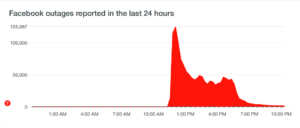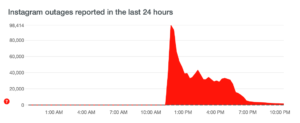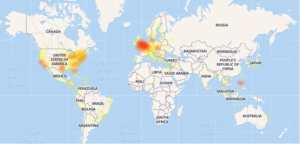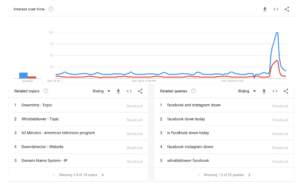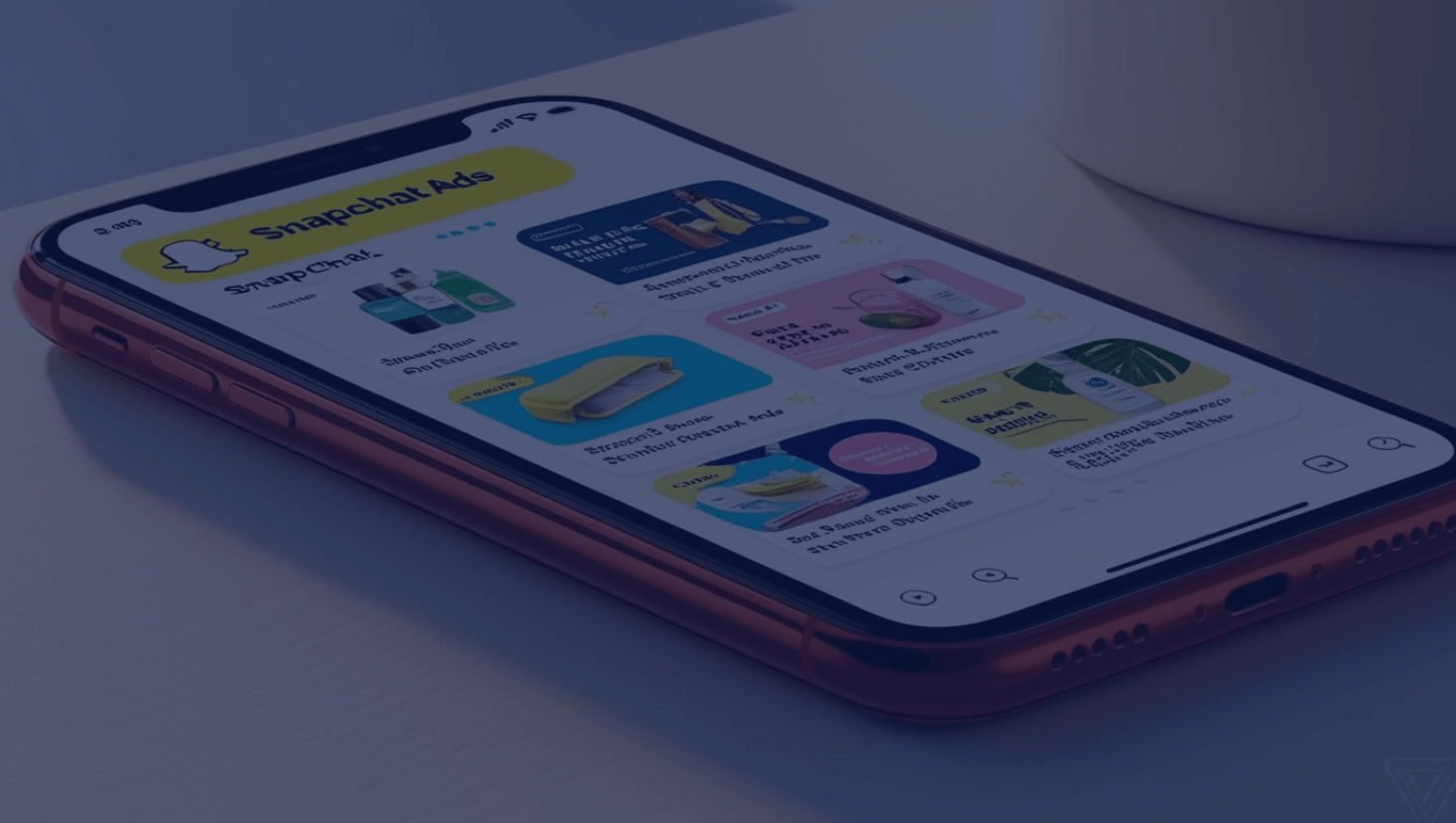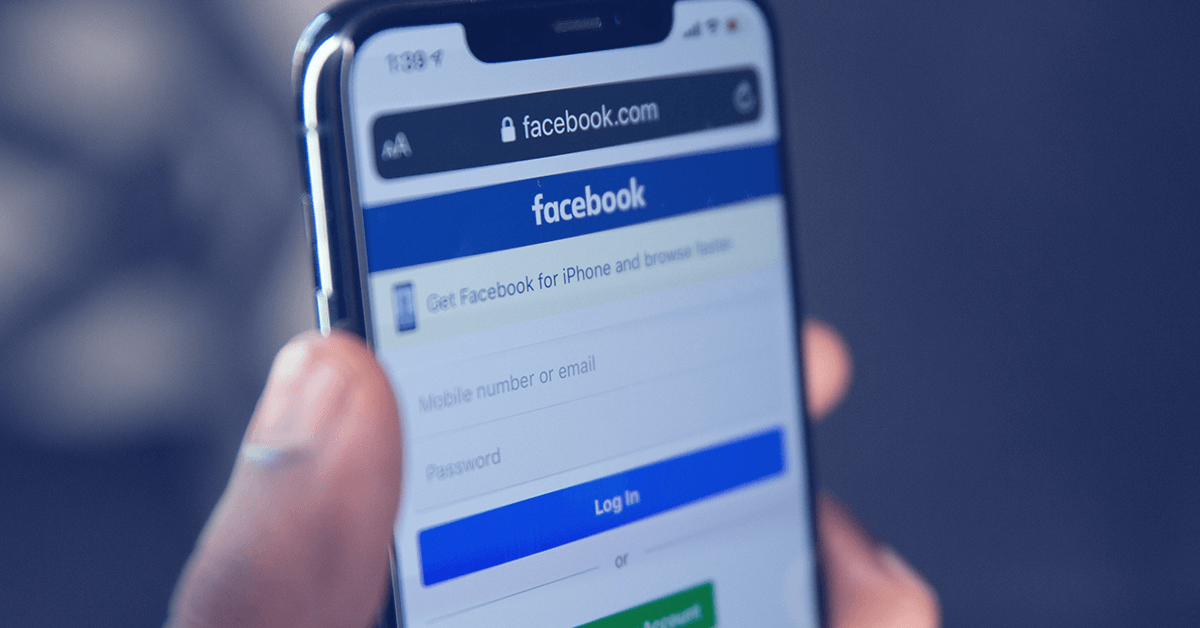
The interconnectivity of communities and dependence on social media became glaringly apparent on October 4, 2021, when the Facebook Family of Apps abruptly went offline worldwide. Within minutes, users turned to Google, Twitter, and other online resources to determine if it was just their channels or more widespread.
We’re aware that some people are having trouble accessing our apps and products. We’re working to get things back to normal as quickly as possible, and we apologize for any inconvenience.
— Meta (@Meta) October 4, 2021
While users felt the burn of being unable to engage with family, friends, brands, and influencers – advertisers and small businesses were deeply impacted. To make matters worse, the blackout occurred the day after a blistering 60 Minutes Report by a former employee whistleblower and just hours after they opened over 4% down on the Stock Market. By the end of the 6 hours, some experts estimated the platform affected 35 million users globally, and the tech giant lost approximately $6 billion in revenue between stock and ad placements.
Just How Widespread Was the Facebook Outage Issue?
Real-time monitoring website Downdetector says the Facebook outage was the largest ever tracked, with over 14 million reports globally. The volume of reports for Facebook and Instagram charted below demonstrates the initial response, followed by the lull as users understood this was not an immediate fix.
The downdetector also shared a heatmap of the outage reports submitted to further highlight the significance of the global phenomenon.
Additionally, the Facebook outage generated a similar response on Google, with a considerable spike in search volume reported by Google Trends. All of the top five related terms and queries reached “breakout” status, meaning interest grew by more than 5,000% during the measured timeframe.
What Exactly Happened to Cause the Facebook Outage?
When attempting to access Facebook and Instagram, we encountered either a Domain Name System (DNS) error or a 5xx server error. In a release shared on Facebook Engineer’s website, the platform shared:
Our engineering teams have learned that configuration changes on the backbone routers that coordinate network traffic between our data centers caused issues that interrupted this communication. This disruption to network traffic had a cascading effect on how our data centers communicate, bringing our services to a halt.
With such a brief explanation, web experts provided further insight into the logistical nightmare.
Think of DNS as a sort of telephone book on the internet. When you enter a domain name into a web browser, the DNS translates that into an IP address (so you don’t have to memorize it) to access the website information. But – this was just part of the issue. Facebook also somehow removed the Border Gateway Protocol (BGP) route, which houses the IP addresses and DNS server names and acts as the GPS. Without the BGP route, the scheduled routine maintenance led to Facebook’s domain falling off the internet’s “map.”
Social Media’s Response
As the social media community came to odds with the Facebook channels being down, users turned to Twitter for both news and comedic relief. A commonplace for people to find answers, Twitter saw sizeable hashtag usage of #InternetShutDown, #Facebook, and #FacebookDown, which saw more than 1.5 million posts alone. The map generated by One Million Tweet Map illustrates where the conversations were generated. Not surprisingly, these are a close correlation to the reporting map.
One of the more entertaining outcomes of the outage was the commentary from brands and user-generated memes. Surprisingly, Twitter itself had one of the most highly engaged tweets during this time as it made light of the increased traffic. Brands were quick to trendjack to increase awareness and engagement—for many, it worked.
https://twitter.com/Twitter/status/1445078208190291973
hi what can i get u
— McDonald's (@McDonalds) October 4, 2021
I don't have hands so I'll just say Hi five times… Hi Hi Hi Hi Hi!
— Alexa (@alexa99) October 4, 2021
*unmutes mic*
Hey everyone.
— Microsoft Teams (@MicrosoftTeams) October 4, 2021
Twitter and Netflix Formed a Pop Culture Alliance
Netflix generated another highly engaged post referencing its new hit sensation, Squid Game—and Twitter users were here for it!
https://twitter.com/Twitter/status/1445094085593866246?s=20
Memes and Gifs Galore
These days, memes and gifs are commonly used in online pop culture language to convey users’ sentiments. As millions waited for the Facebook Family of Apps to return online during the outage, creative content flowed on alternate websites such as Twitter and TikTok. Below is a sampling of memes shared.
Whatsapp, Facebook and Instagram are down now…
Twitter people are like..#facebookdown pic.twitter.com/MybLOeOQmr
— Aaron Lee (@AskAaronLee) October 4, 2021
woah that was quick pic.twitter.com/xt9IWCip5j
— Joe Groff ⎷⃣ (@jckarter) October 4, 2021
Me after going into the 5th hour without Instagram pic.twitter.com/lXtZ45fX0b
— Janet Forklift (@janetforklift) October 4, 2021
Conclusion
While the Facebook outage created a stressful day for many, one lesson is that brands must be nimble in the event a social channel goes down. Additionally, joining in on globally relevant conversations can increase social media engagement and impressions when the opportunity presents itself.
Are you not sure how your brand would have capitalized on the Facebook outage? Contact Overdrive Interactive to speak with our Social Media team to see how we can provide custom SEO services that amplify your connections.




